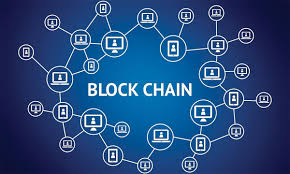Blockchain technology has emerged as one of the most revolutionary innovations of the 21st century, potentially reshaping industries ranging from finance and healthcare to supply chain management and voting systems. Originally conceptualised as the backbone of Bitcoin, blockchain has evolved into a multifaceted technology with applications far beyond crypto currencies. This article explores blockchain’s fundamentals, working principles, types, advantages, challenges, and prospects.
Blockchain Technology. Blockchain is a decentralised digital ledger that records transactions across multiple computers in a way that allows registered transactions not to be altered retroactively. This ensures transparency, security, and immutability. Unlike traditional centralised systems, where a single entity maintains control, blockchain relies on a distributed network of nodes that validate and record transactions collectively. The blockchain operates through a series of interconnected blocks, each containing a set of transactions. These blocks are cryptographically linked to one another, forming a continuous chain.
Types of Blockchains
Blockchain technology can be categorised into four primary types: public, private, consortium (federated), and hybrid blockchains. Each differs in decentralisation, security, accessibility, and use cases. Each type of blockchain has its strengths and weaknesses, making it suitable for different applications.
Public blockchains are the most decentralised, allowing anyone to participate as a node, verify transactions, or create smart contracts. These blockchains operate on consensus mechanisms such as Proof of Work (PoW) or Proof of Stake (PoS) to maintain security and prevent fraudulent activities. Examples include Bitcoin and Ethereum, where transactions are publicly recorded on a distributed ledger, ensuring transparency and immutability. Public blockchains are widely used for crypto currency transactions, decentralised applications (dApps), and smart contracts. Still, they often suffer from scalability issues due to the high computational power required for validation.
In contrast, private blockchains are permissioned networks controlled by a single organisation, offering greater efficiency, speed, and privacy but at the cost of decentralisation. Enterprises commonly use these blockchains for internal record-keeping, supply chain management, and financial transactions, as they provide better control over data access while ensuring security. Hyper ledger Fabric, developed by the Linux Foundation, is a prime example, allowing businesses to customise access controls while benefiting from blockchain’s immutability and efficiency.
Consortium blockchains, or federated blockchains, are a semi-decentralized form where multiple organisations collaboratively maintain the network. Unlike public blockchains, where anyone can participate, and private blockchains, which are controlled by a single entity, consortium blockchains strike a balance by distributing control among a group of verified participants. These are commonly used in industries like banking, healthcare, and supply chain management, where different stakeholders need shared access to a secure and tamper-proof ledger while maintaining confidentiality. An example is R3 Corda, which is widely adopted in the financial sector for secure interbank transactions and trade settlements. The primary advantage of consortium blockchains is their enhanced security and efficiency compared to public blockchains while reducing the centralisation risks associated with private blockchains. However, setting up and managing such networks can be complex due to the need for coordination among multiple organisations.
Lastly, hybrid blockchains integrate features of both public and private blockchains, allowing organisations to control access to specific data while still leveraging the transparency and security of a public blockchain. These blockchains enable businesses to keep sensitive information private while allowing public verification of certain transactions. A notable example is XinFin’s XDC Network, which is used for global trade and finance by enabling efficient cross-border payments while maintaining regulatory compliance. Hybrid blockchains are ideal for industries requiring privacy and transparency, such as government agencies, healthcare, and enterprise solutions. Their flexibility allows companies to benefit from blockchain’s immutability and security while retaining control over critical operations. However, implementing a hybrid blockchain can be complex, requiring seamless public and private elements integration.
Applications of Blockchain Technology
Blockchain technology has revolutionised multiple industries by offering a decentralised, secure, and transparent way to store and transfer data. Its applications extend beyond crypto currencies and are widely adopted in finance, healthcare, supply chain management, voting systems, etc.
One of the most well-known applications of blockchain is crypto currency. Bitcoin, Ethereum, and other digital currencies operate on blockchain networks, allowing secure, transparent, and decentralised transactions without a central authority like banks. Blockchain ensures that every transaction is recorded on an immutable ledger, reducing the risk of fraud and enabling peer-to-peer financial exchanges. Crypto currencies are used for everyday transactions and investments and even as a means of fundraising through Initial Coin Offerings (ICOs) and decentralised finance (DeFi) platforms.
Another significant application is smart contracts, self-executing agreements with predefined terms written into code. These contracts automatically enforce the agreed-upon rules without requiring intermediaries, reducing costs and increasing efficiency. Smart contracts benefit real estate, insurance, and supply chain management by streamlining transactions and ensuring trust. For example, in real estate, smart contracts facilitate seamless property transfers by automating verification and payment processes.
Blockchain also plays a critical role in supply chain management, enhancing transparency by tracking goods from the manufacturer to the end consumer. By recording every step of the supply chain on a secure and immutable ledger, blockchain helps prevent fraud, counterfeit products, and inefficiencies in logistics. Companies like IBM and Walmart have implemented blockchain solutions to verify product authenticity and improve traceability, ensuring compliance with regulations and customer trust.
In healthcare, blockchain enhances data security by providing a tamper-proof system for storing patient medical records. With blockchain, medical data can be securely shared across hospitals, clinics, and insurance providers while ensuring patient privacy. Additionally, it helps reduce fraud in pharmaceutical supply chains by verifying the authenticity of medicines and tracking their distribution. This ensures that counterfeit drugs do not enter the market, protecting patients from harmful substances.
The financial services industry has also embraced blockchain for secure and efficient transactions. Traditional banking systems suffer from inefficiencies, lengthy settlement times, and high fees for cross-border transactions. Blockchain enables real-time international payments with reduced costs, benefiting businesses and individuals. Platforms like Ripple and Stellar use blockchain to facilitate instant and low-cost transactions, making financial services more accessible and inclusive.
Another innovative application of blockchain is in voting systems, which enhances electoral integrity by providing a transparent and tamper-proof voting process. Traditional voting systems are vulnerable to fraud, manipulation, and inefficiencies, but blockchain-based voting ensures that each vote is securely recorded and cannot be altered. This technology increases voter confidence and trust in elections while reducing the risks of ballot tampering and double voting.
In real estate, blockchain simplifies property transactions by reducing paperwork, minimising fraud, and expediting ownership transfers. Smart contracts enable automated lease agreements, property sales, and mortgage approvals without the need for intermediaries. This saves time and money and ensures greater transparency in property dealings.
Advantages of Blockchain Technology
Blockchain technology offers numerous advantages across various industries by providing a decentralised, secure, and transparent digital transaction and data management framework. These benefits have revolutionised blockchain in finance, supply chain management, healthcare, and other sectors.
One of the most significant advantages of blockchain is decentralisation, which eliminates the need for central authorities such as banks, governments, or intermediaries to validate and process transactions. In traditional systems, centralised entities control data and transactions, making them vulnerable to corruption, fraud, and manipulation. Blockchain distributes control across a network of nodes, ensuring no single entity has complete authority. This decentralised nature enhances security, reduces risks associated with system failures, and promotes financial inclusion by allowing individuals to transact directly without relying on intermediaries. Crypto currencies like Bitcoin and Ethereum exemplify how decentralisation empowers users with complete control over their assets and transactions.
Another key advantage is security, as blockchain employs cryptographic hashing and consensus mechanisms such as Proof of Work (PoW) and Proof of Stake (PoS) to protect data from unauthorised alterations. Each data block is linked to the previous one through cryptographic hashes, making it nearly impossible to alter transaction history without detection. Additionally, transactions on blockchain networks must be validated by multiple participants, ensuring that fraudulent activities are prevented. This high level of security makes blockchain ideal for industries dealing with sensitive information, such as financial services, healthcare, and legal contracts. Businesses and individuals benefit from enhanced data protection, reducing the risks of cyber-attacks and unauthorised modifications.
Transparency is another significant benefit of blockchain technology. Public blockchains operate on an open ledger system, allowing anyone to view and verify transactions in real-time. This level of transparency fosters trust among users and prevents fraudulent activities, as all transactions are permanently recorded and accessible for auditing. Transparency is especially beneficial in government operations, charitable organisations, and financial institutions, where accountability is crucial. For example, blockchain can help combat corruption by providing a verifiable record of fund allocations and expenditures, ensuring that resources are used appropriately.
One of the most practical advantages of blockchain is cost reduction, as it eliminates the need for intermediaries in transactions. Traditional financial transactions often involve banks, payment processors, and third-party service providers, all of which charge fees. Blockchain facilitates peer-to-peer transactions, significantly reducing remittances, international transfers, and contract enforcement costs. Businesses can save money by automating processes with blockchain-based smart contracts, reducing paperwork, administrative overhead, and the need for legal intermediaries. This makes blockchain a cost-effective solution for industries that require frequent financial transactions and contractual agreements.
Automation is another advantage enabled by smart contracts, self-executing agreements with predefined conditions coded into blockchain networks. Smart contracts eliminate the need for intermediaries and manual processing, increasing efficiency and reducing transaction delays. These contracts are widely used in real estate, insurance, and supply chain management industries, where automated agreements can streamline operations, reduce disputes, and ensure timely execution. For instance, a smart contract in real estate can automatically transfer property ownership once payment is verified, eliminating the need for brokers or notaries.
Lastly, improved traceability enhances supply chains, financial transactions, and asset ownership verification. Blockchain provides a transparent and immutable record of transactions, enabling businesses to track the movement of goods, verify authenticity, and ensure compliance with regulations. This is particularly useful in industries such as food safety, pharmaceuticals, and luxury goods, where tracking the origin and journey of products is essential. Companies like Walmart and IBM have adopted blockchain-based traceability solutions to monitor supply chains and reduce fraud. By providing a permanent and verifiable history of transactions, blockchain increases efficiency, reduces counterfeiting, and ensures accountability in business operations.
Challenges of Blockchain Technology
Despite its numerous advantages, blockchain technology faces challenges that hinder its widespread adoption and implementation. One of the most significant challenges is scalability. Many blockchain networks, especially those using Proof of Work (PoW) consensus mechanisms like Bitcoin and Ethereum, struggle with network congestion and limited transaction throughput. As transaction volume increases, processing times slow and transaction fees rise, making blockchain less efficient for large-scale applications. While solutions like layer-2 scaling (e.g., Lightning Network) and Proof of Stake (PoS) aim to address these issues, achieving seamless scalability remains challenging.
Another primary concern is energy consumption, particularly for PoW-based blockchains. Mining activities require substantial computational power, leading to excessive electricity usage. Bitcoin mining, for example, consumes as much energy as some small countries, raising environmental concerns. Although newer consensus mechanisms like PoS and hybrid approaches seek to reduce energy consumption, sustainability remains a critical issue for blockchain technology.
Regulatory uncertainty also poses a significant challenge. Governments worldwide have varying approaches to blockchain regulation, with some embracing it and others imposing strict restrictions. Unclear or evolving rules make it difficult for businesses and investors to navigate legal compliance, slowing adoption in financial services, crypto currency markets, and other industries. A lack of standardised global regulations further complicates cross-border blockchain applications.
Although blockchain is secure, security risks exist, particularly with smart contract vulnerabilities. Poorly written or exploited smart contracts have led to significant financial losses through hacks and attacks. Additionally, blockchain-based applications remain susceptible to phishing scams and fraudulent activities, making cyber security a priority concern.
Another challenge is adoption barriers. Integrating blockchain with legacy systems requires significant time, expertise, and financial investment. Businesses must upgrade their infrastructure, train employees, and ensure interoperability with traditional systems, which can slow adoption.
Finally, privacy concerns arise due to blockchain’s transparency. While public blockchains enhance security and trust, they expose transaction details, potentially compromising user confidentiality. Private and permissioned blockchains attempt to address this issue, but finding the right balance between transparency and privacy remains challenging.
Future of Blockchain Technology
Blockchain technology is poised to undergo significant advancements in the coming years, with innovations that will reshape industries and enhance efficiency. As adoption grows, key trends such as artificial intelligence (AI) integration, central bank digital currencies (CBDCs), scalability improvements, enterprise applications, sustainability efforts, and decentralised finance (DeFi) expansion will define the future of blockchain.
One of the most transformative trends is the integration of blockchain with AI and the Internet of Things (IoT). By combining blockchain’s security and decentralisation with AI’s analytical capabilities, businesses can automate decision-making and enhance data integrity. Similarly, IoT devices generate vast amounts of data, and blockchain can provide a secure, immutable ledger to prevent data tampering. This integration will be especially valuable in healthcare, supply chain management, and smart cities, where automation and security are paramount.
Another significant development is the rise of Central Bank Digital Currencies (CBDCs). Governments and financial institutions worldwide are exploring blockchain-based digital currencies to modernise monetary systems, improve transaction efficiency, and enhance financial inclusion. Countries like China, the European Union, and the U.S. Federal Reserve are researching or piloting CBDCs to complement traditional cash while offering benefits such as faster cross-border payments and reduced reliance on intermediaries.
Addressing scalability issues remains a top priority for blockchain networks. Layer-2 solutions like the Lightning Network for Bitcoin and sharding for Ethereum aim to increase transaction speeds and reduce fees. These advancements will enable blockchain to support high-volume applications such as global payment systems, gaming platforms, and decentralised applications (dApps).
The adoption of enterprise blockchain solutions is also accelerating. Businesses integrate blockchain into supply chains to enhance traceability, prevent fraud, and optimise logistics. Financial institutions leverage blockchain for secure transactions, smart contracts, and fraud prevention, while sectors like healthcare and cybersecurity utilise blockchain for safe data storage and identity verification. This growing enterprise adoption highlights blockchain’s potential to revolutionise traditional business operations.
As environmental concerns surrounding blockchain grow, green blockchain initiatives are gaining traction. Many projects shift from energy-intensive Proof of Work (PoW) models to eco-friendly Proof of Stake (PoS) consensus mechanisms. Carbon-neutral networks and blockchain-powered carbon credit tracking systems are also emerging, ensuring sustainability without compromising decentralisation and security. These efforts will make blockchain more viable for long-term adoption.
Finally, Decentralized Finance (DeFi) continues to reshape traditional banking and financial services. DeFi platforms offer peer-to-peer lending, yield farming, and decentralised exchanges, removing intermediaries and reducing users’ costs. As DeFi expands, it will introduce more financial products and improve access to financial services worldwide, driving innovation in blockchain-based banking.
Conclusion
Blockchain technology is a ground breaking innovation with the potential to disrupt various industries by enhancing transparency, security, and efficiency. While challenges remain, ongoing advancements and growing adoption indicate a promising future for blockchain applications. Whether in finance, healthcare, supply chains, or governance, blockchain continues to shape the digital landscape and redefine how transactions are conducted globally.
Please Do Comment.
For regular updates, please register your email here:-
References and credits
To all the online sites and channels.
Pics Courtesy: Internet
Disclaimer:
Information and data included in the blog are for educational & non-commercial purposes only and have been carefully adapted, excerpted, or edited from reliable and accurate sources. All copyrighted material belongs to respective owners and is provided only for wider dissemination.
References:–
- Swan, M. (2015). Blockchain: Blueprint for a New Economy. O’Reilly Media.
- Tapscott, D., & Tapscott, A. (2016). Blockchain Revolution: How the Technology Behind Bitcoin and Other Cryptocurrencies is Changing the World. Portfolio.
- Mougayar, W. (2016). The Business Blockchain: Promise, Practice, and Application of the Next Internet Technology. Wiley.
- Antonopoulos, A. M. (2017). Mastering Bitcoin: Unlocking Digital Cryptocurrencies (2nd ed.). O’Reilly Media.
- Drescher, D. (2017). Blockchain Basics: A Non-Technical Introduction in 25 Steps. Apress.
- Yaga, D., Mell, P., Roby, N., & Scarfone, K. (2018). Blockchain Technology Overview. National Institute of Standards and Technology (NIST). Retrieved from https://doi.org/10.6028/NIST.IR.8202
- Casino, F., Dasaklis, T. K., & Patsakis, C. (2019). A Systematic Literature Review of Blockchain-Based Applications: Current Status, Classification, and Open Issues. Telematics and Informatics, 36, 55–81.
- European Union Blockchain Observatory and Forum. (2020). Blockchain and the Future of Digital Identity. Retrieved from https://www.eublockchainforum.eu/
- Iansiti, M., & Lakhani, K. R. (2017). The Truth About Blockchain. Harvard Business Review, 95(1), 118–127.
- Risius, M., & Spohrer, K. (2017). A Blockchain Research Framework: What We (Don’t) Know, Where We Go from Here, and How We Will Get There. Business & Information Systems Engineering, 59(6), 385–409.
- lnes, S., Ubacht, J., & Janssen, M. (2017). Blockchain in Government: Benefits and Implications of Distributed Ledger Technology for Information Sharing. Government Information Quarterly, 34(3), 355–364.
- World Economic Forum. (2021). Global Future Council on Cryptocurrencies: Exploring Blockchain’s Role in the Global Economy. Retrieved from https://www.weforum.org



